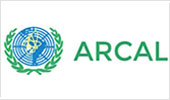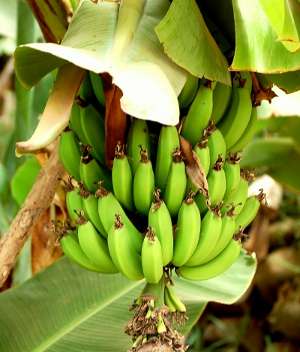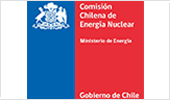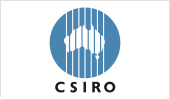|
|
|
|
Contact person in the laboratory |
Maria de Fátima Martins Pinhel |
|
Email of contact person |
This email address is being protected from spambots. You need JavaScript enabled to view it. |
|
Mandate of the Laboratory: |
LANAGRO-SP is an Official Laboratory of MAPA - Ministry of Agriculture, Livestock and Food Supply. It is to support, through laboratory analysis, the inspection actions and monitoring programs of the SDA - Agriculture and Livestock Defense Secretariat. |
|
Role in the farm-to-fork chain: |
The main role is to support MAPA’s policies such as to coordinate and monitor technical studies, science and technology, analytical tests and actions by trace, control, monitoring and evaluation processes relating to the safety and quality of animal and vegetal origin products, and animal health. |
|
National Reference Laboratory: |
Yes. LANAGRO-SP is an OIE reference laboratory for avian influenza and Newcastle disease diagnosis. As a national l laboratory, LANAGRO-SP also acts according to the MAPA’s policies in official inspection programs, analysing products of animal origin, animal feed, beverages, fertilizers, avian vaccines, anti- rabies vaccines, veterinary drugs, pesticides and samples for avian diagnosis, in order to ensure the safety and quality of the product for domestic market, exporting and importing operations. Besides that, LANAGRO- SP is reference laboratory to the PNCRC – National Program for Residues and Contaminants Control, processing samples of meat (poultry, cattle, swine, equine, and fish) and milk, for exportation, importation and national trade. Other activities includes the participation on audits in private laboratories of the MAPA’s Network laboratories and research, development and validation of laboratory methods. |
|
Type of contaminants analysed: |
ANIMAL AREA |
|
Matrices analysed: |
Matrices of animal origin: meat of bovine, equine, swine, fish and shrimp, poultry, ostrich, sheep, goat, rabbit; honey and milk. Matrices of plant area: beverages |
|
Combination matrices and contaminants |
See attached table – Contaminants and Matrices/Species - |
|
Description of validated method used: |
Inorganic Contaminants Residues Organochlorine pesticide residues Veterinary drugs residues Microbial contaminants |
|
Laboratory accredited according to |
Yes |
|
Provision of interpretation of residue |
Yes |
|
Laboratory certified according to GLP: |
No |
|
|
Contact person in the laboratory: |
Anna Lucia Casañas Haasis Villavicencio |
Email: |
This email address is being protected from spambots. You need JavaScript enabled to view it. |
Mandate of the Laboratory: |
Analysis on food irradiation: Physical, chemical, physico'chemical, biochemical, biological, microbiological, toxicological, nutritional, sensorial analysis, food irradiation detection and formation of new compound in processed foods by radiation. |
Role in the farm-to-fork chain: |
We are involved in the farm-to-fork chain from the beginning using nuclear technology in the phytosanitary field prevention as well as in the industrial processing of food packaged "fresh" ready to eat, when indicate that technology in order to provide safe food to consumers. |
National Reference Laboratory: |
Not yet. |
Type of contaminants analysed: |
Insect and microbiological contamination, mycotoxin, volatile compounds, hydrocarbons and alkyl cyclobutanones. |
Matrices analysed: |
Packaged Food in general as well as grains, tea, spices, fresh and dehydrated fruits and vegetables, all kind of meat that countains small amount of fat. |
|
Combination matrices and contaminantsanalysed: |
Fat meat: alkyl cyclobutanones Fat fruits: alkyl cyclobutanones |
|
Description of validated method used: |
EN 1784 (CG/MS) EN 1785 (2-ACB) EN 1786 (RPE bones) EN 1787 (RPE cellulose) EN 1788 (TL) EN 13708 (RPE aҫucar) EN 13783 (DEFT-APC) EN 13784 (comet) EN 14569 (LAL-GNB) |
|
Laboratory accredited according to |
Not yet |
|
Provision of interpretation of residue |
No |
| Provision of interpretation of residue data to customers: |
No |
|
Laboratory certified according to GLP: |
Not yet |
|
Is laboratory available for research and |
We hope yes
|
|
Is the laboratory available for quality auditing services within RALACA when funding becomes available? |
We expect yes
|
|
Is the laboratory available for expert missions within RALACA when funding becomes available? |
Yes
|
|
Is the laboratory available for ad hoc on-site training when funding becomes available? |
Yes |
|
Is the laboratory available for ad hoc |
Yes |
|
Is the laboratory available for preparation of ad hoc reference materials when projects/funding becomes available? |
Yes |
|
Is the laboratory available for organization and distribution of ad hoc proficiency testing/collaborative trials when projects/funding becomes available? |
Yes |
|
|
|
|
Contact person in the laboratory |
Ionara Regina Pizzutti |
|
Email of contact person |
This email address is being protected from spambots. You need JavaScript enabled to view it. |
|
Type of contaminants analysed: |
Mainly Pesticides and Mycotoxins |
|
Matrices analysed: |
Food: Fruits; vegetables; grains as soya, rice, wheat, corn; wine; juice; coffee; cocoa; processed food and so on. |
|
Description of validated method used: |
1) QuEChERS (multiresidue method for LC and GC pesticide analysis) |
|
Pesticide Residue Laboratory- LabTox |
|
|
Contact person: |
Danusa Leal Telles |
|
Email address: |
This email address is being protected from spambots. You need JavaScript enabled to view it., This email address is being protected from spambots. You need JavaScript enabled to view it. |
|
Type of contaminants analysed: |
Pesticides, wine components, cachaça ( Brazilian Liqueur ) |
| Matrices analysed: | Fruits, Vegs, Cereal, Eater, Beverages |
| Role of the laboratory: |
|
| National laboratory reference: | Yes. We are reference Laboratory for the Ministery of Agriculture. We develop methodology as well as analyse samples from the national monitoring program. |
A los Laboratorios Miembro de la RILAA
Nos complace informar que el Laboratorio Nacional Agropecuario del Ministerio de Agricultura, Pecuaria y Abastecimiento (LANAGRO-MG/MAPA) del Brasil va a organizar un ensayo de aptitud para dioxinas y furanos de relevancia toxicológica en matriz de pescado, durante el primer semestre de 2014.
Las muestras, su transporte e informe de resultados serán gratuitos, en tanto que eventuales trámites, impuestos y costos aduaneros en el país de destino deberán ser cubiertos por el Laboratorio participante.
En la dirección: http://www.eSurveysPro.com/Survey.aspx?id=c18f5db6-2c66-41ef-ac9c-559a81ac384c usted puede encontrar información detallada sobre las características del ensayo de aptitud y completar el formulario de inscripción y consultas al organizador.
Debido a que hay pocos laboratorios miembros de la RILAA que realizan estas determinaciones analíticas, podrán ser admitidos en el ensayo de aptitud "laboratorios no miembros" de otros sectores (inclusive privados). Por ello le pedimos que nos ayude a difundir este ejercicio interlaboratorio (por ejemplo, informándonos la dirección de email o reenviando este correo a quien corresponda).
Muchas gracias.
Atentamente,
Jorge E. Torroba
Secretaría ex officio de la RILAA-OPS/OMS
 Vienna, Austria
Vienna, Austria 













